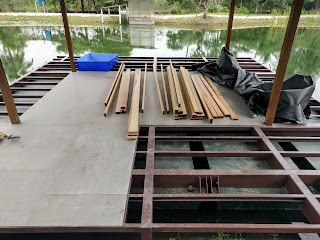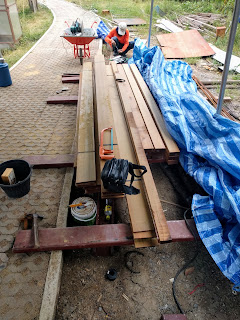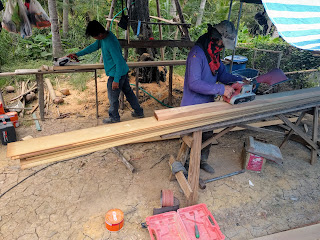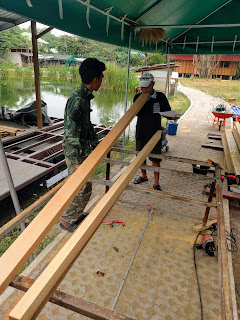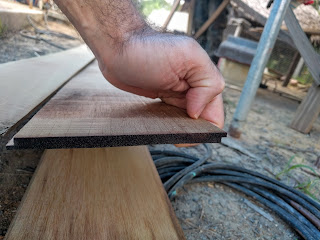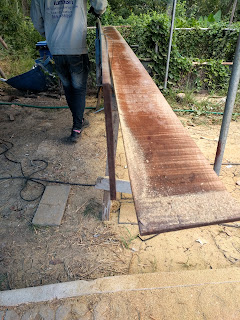So we bought the wood for the walls of BaanLoiNaam:
It really doesn’t look like much lying there in a pile, does it?
The next step is to put up the walls. This was one of the slower parts of construction for both BaanMae and BaanRimNaam.
The steel for the structure goes up quite quickly. Steel can be anti-rust coated, welded, anti-rust coated again and painted quite rapidly. And there isn’t that much steel in the frame.
But wood needs more care to sand it smooth…
pieces need to be evaluated for straightness and straightened if needed…
And even after it is all installed, it still needs filler for small holes or cracks between planks. And there are a lot more pieces of wood for the entire walls of the house than there are steel beams for the structure.
One new wrinkle compared to the previous houses is the thickness of the wood for the walls. Previously we used about 22mm thick wood for the walls, and the wood shop we bought it from handled all of the tongue and groove routing for the wall planks. But this time, we are going for a stronger hardwood (“mai teng”) that is only half the thickness. At about 11mm, we can only do a simpler overlap joint on the edges. Here is a piece that has already been routed:
And this is the way they are routing it:
He has a stack of the planks flat on the right side, and flips them up into a simple jig to hold them vertically one at a time so he can run the router across the top. (Then he flips it over to do the other side.) You can see how thin it is in the pictures above.
We will be using the exposed studs every 50cm on the outside of the wall similarly to how we did the other houses, so hopefully this reinforces the wood enough to no break if I lean against the wall or something. But it is probably thinner than most people would advise.
The reason for this is weight. When I calculated the weight of BaanMae from its materials, the wood for the walls was the single heaviest line item. By halving the thickness, we nearly halve the weight of the walls. (We aren’t halving the thickness of the support studs but there is much less stud compared to flat wall surface. So it isn’t quite half the weight.) The “mai teng” is a little heavier than the woods we used in the other houses but I estimate that is only about 20%-30% more weight by volume. And hardwoods like “mai teng” should be better at handling moisture. This is a floating house after all, so of course the materials have to be as moisture resistant as reasonably possible.
